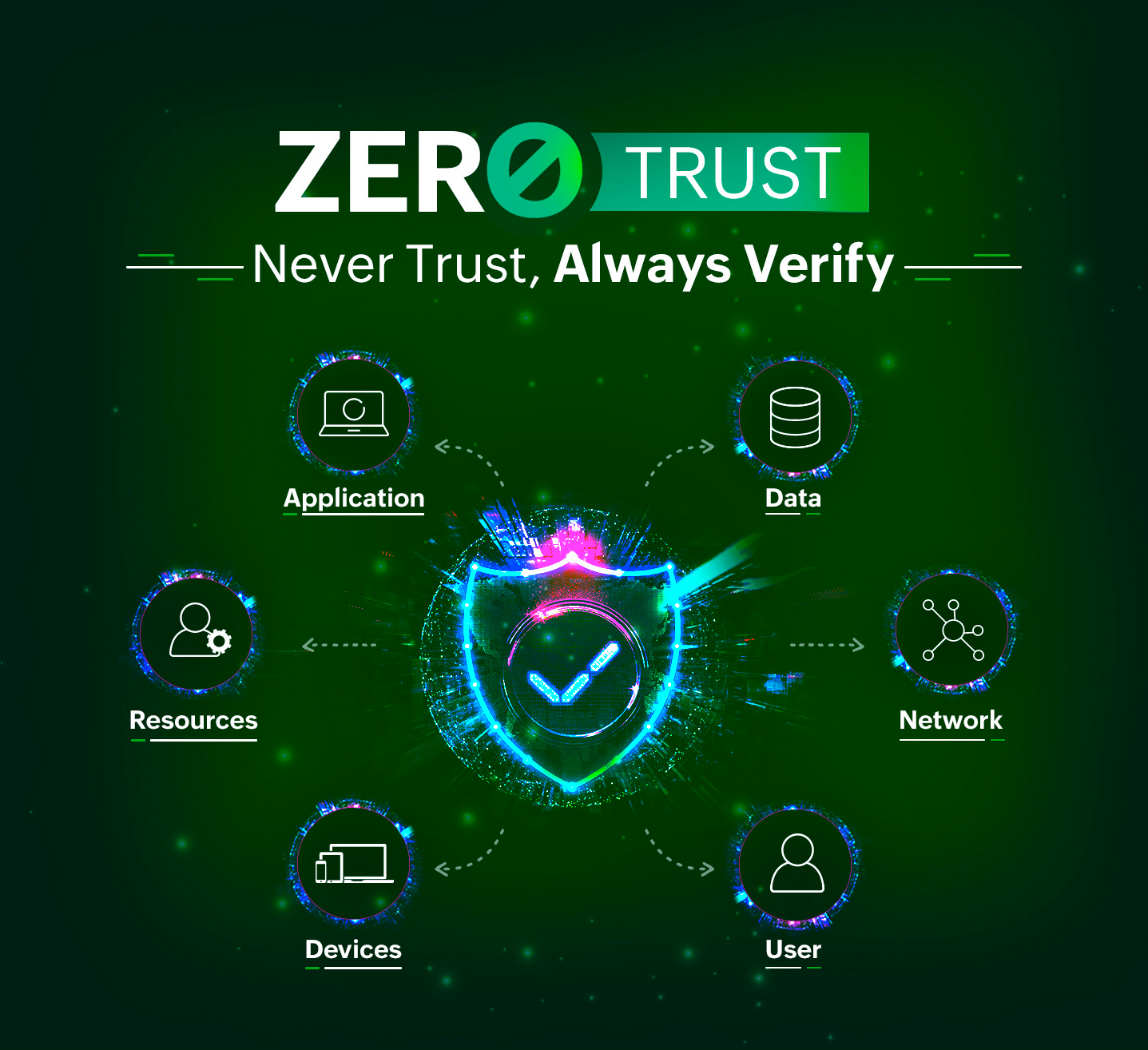Drawing upon my extensive experience within the banking industry, coupled with the escalating utilization of social engineering tactics, I argue that humanizing the concept of Zero Trust and embedding it into the organizational culture should rank as one of the highest priorities for safeguarding assets from malicious actors.
The Zero Trust model driven by the maxim “never trust, always verify,” has emerged as a pivotal strategy in the cybersecurity landscape, particularly amidst the relentless evolution of cyber threats.
𝑼𝒏𝒅𝒆𝒓𝒔𝒕𝒂𝒏𝒅𝒊𝒏𝒈 𝒁𝒆𝒓𝒐 𝑻𝒓𝒖𝒔𝒕
Traditionally, networks were presumed secure based solely on their location. However, in 2010, John Kindervag of Forrester Research challenged this notion, introducing the concept of Zero Trust by debunking perimeter-based trust assumptions. This paradigm shift underscores the necessity to scrutinize all connection attempts, regardless of origin, through authentication, authorization, and continuous validation of security posture before granting access to applications and data.
𝑻𝒉𝒆 𝑰𝒎𝒑𝒆𝒓𝒂𝒕𝒊𝒗𝒆 𝒐𝒇 𝑯𝒖𝒎𝒂𝒏𝒊𝒛𝒂𝒕𝒊𝒐𝒏
Despite substantial investments in network fortification, the prevalence of zero-day attacks underscores the vulnerability of organizational assets. I believe that the frontline of defense lies within the workforce, as adversaries often exploit human vulnerabilities to gain access. Research revealing that 98% of cyber attacks and 90% of malicious data breaches involve social engineering underscores the urgency of addressing this human element.
𝑪𝒖𝒍𝒕𝒊𝒗𝒂𝒕𝒊𝒏𝒈 𝒂 𝑪𝒖𝒍𝒕𝒖𝒓𝒆 𝒐𝒇 𝒁𝒆𝒓𝒐 𝑻𝒓𝒖𝒔𝒕
Developing such a culture requires collective consciousness, where every individual assumes responsibility for identifying and thwarting threats. The culture should be anchored on skepticism, fueled by knowledge and supported by robust internal processes.
𝘒𝘦𝘺 𝘚𝘵𝘳𝘢𝘵𝘦𝘨𝘪𝘦𝘴 𝘧𝘰𝘳 𝘐𝘮𝘱𝘭𝘦𝘮𝘦𝘯𝘵𝘢𝘵𝘪𝘰𝘯
1. 𝘊𝘰𝘳𝘱𝘰𝘳𝘢𝘵𝘦 𝘚𝘵𝘳𝘢𝘵𝘦𝘨𝘺: Zero Trust must permeate the organization’s corporate strategy, emanating from the boardroom to frontline operations.
2. 𝘌𝘮𝘱𝘭𝘰𝘺𝘦𝘦 𝘊𝘰𝘯𝘴𝘤𝘪𝘰𝘶𝘴𝘯𝘦𝘴𝘴: Equipping employees with knowledge of their gatekeeper role empowers them to safeguard against cyber threats.
3. 𝘍𝘳𝘢𝘮𝘦𝘸𝘰𝘳𝘬𝘴 & 𝘗𝘳𝘰𝘵𝘰𝘤𝘰𝘭𝘴: Providing frameworks, protocols and methods that empower employees to meticulously VERIFY all incoming requests
4. 𝘚𝘶𝘴𝘵𝘢𝘪𝘯𝘪𝘯𝘨 𝘵𝘩𝘦 𝘊𝘶𝘭𝘵𝘶𝘳𝘦: Continuous education, regular simulation exercises, and incentivizing vigilance are essential for sustaining a culture of Zero Trust.
𝐂𝐨𝐧𝐜𝐥𝐮𝐬𝐢𝐨𝐧
Embracing Zero Trust as a an integral part of an organization’s culture ensures that organizations have a stronger first line of defense, fostering resilience in the face of ever-changing risks.





